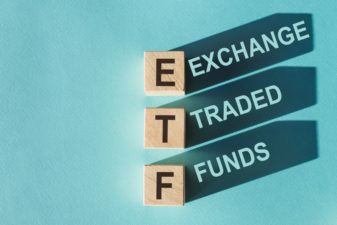If you’re dreaming of quitting work at 40, you’ll need to have a pretty solid nest egg tucked away. Canadians generally aim for about $1 million to $1.5 million in savings to retire comfortably at 40, though this can vary depending on your lifestyle and spending habits. To reach that goal, financial experts often suggest saving aggressively, up to 50% of your income, during your working years and investing wisely to let your money grow.
Of course, the exact amount you need depends on how frugally or lavishly you plan to live in your golden years. Yet hitting that seven-figure mark is a good rule of thumb to keep you sipping cocktails on the beach instead of worrying about bills, especially with dividend income on your side.
The fast track
If you’re eager to fast-track your path to early retirement at 40, Canadians can take a few strategic steps to make it happen. First, ramp up your savings rate by cutting out unnecessary expenses and boosting your income where possible. Think side hustles or investing in skills that can lead to higher-paying jobs. The magic formula here is to live well below your means and funnel as much as possible into your retirement accounts. Consider maxing out your RRSP (Registered Retirement Savings Plan) and TFSA (Tax-Free Savings Account) contributions, as these accounts offer tax advantages that can help your money grow faster.
Next, make your money work harder by investing it wisely. Diversify your portfolio with a mix of stocks, bonds, and perhaps some real estate to balance risk and return. Compounding interest is your best friend, so the earlier you start, the better. It’s also smart to stay informed and possibly work with a financial advisor to ensure your investment strategy aligns with your early retirement goals. And don’t forget about those little expenses. Eliminating or reducing debt, particularly high-interest debt, can free up more money for saving and investing. By staying disciplined and focused, you can shave years off your retirement timeline and be sipping margaritas on a beach by the time you hit the big 4-0!
Invest wisely
If you’re looking to speed up your journey to early retirement, investing in the stock market is often considered one of the fastest routes to grow your wealth. Start by focusing on a well-diversified portfolio of growth stocks, which are companies expected to grow faster than the market average. These stocks might be a bit riskier, but they also offer higher potential returns. You can also consider index funds or exchange-traded funds (ETFs) that track high-performing sectors, like technology or healthcare. These have shown strong growth in recent years. The key here is to invest regularly, even when the market is down, to take advantage of dollar-cost averaging.
For those who can stomach a bit more risk, cryptocurrency and real estate can also offer fast-tracked returns. Cryptos have seen explosive growth, although they come with high volatility. If you’re more comfortable with tangible assets, investing in rental properties can generate steady cash flow and appreciate over time, especially in booming markets. Just make sure to do your homework and possibly consult with a financial advisor to tailor an investment strategy that matches your risk tolerance and retirement timeline. With a little bit of risk and a lot of patience, these options can help you get to your financial goals faster.
An ETF to consider
If you want growth with less worry, iShares MSCI USA Quality Factor Index ETF (TSX:XQLT), which focuses on quality stocks, could be a strong option for investors looking to balance growth with stability. This ETF invests in companies that have demonstrated strong financial health, with consistent earnings, low debt, and high returns on equity.
Essentially, XQLT is all about investing in businesses that have their act together. Thus making it a more reliable choice for those who want to ride the ups and downs of the market with a bit more peace of mind. Plus, quality stocks tend to perform well over the long term, making this ETF a solid foundation for building wealth.
Another reason XQLT could be a smart pick is its diversified exposure to various sectors. This means you’re not putting all your eggs in one basket. The ETF spreads its investments across different industries, which can help reduce risk if one sector takes a hit. Additionally, the companies in XQLT typically have a strong track record of weathering economic downturns. Thus making it a resilient choice for both novice and seasoned investors. Whether you’re in it for the long haul or aiming for early retirement, XQLT provides a balanced approach to growing your portfolio without the wild swings of more speculative investments.







